New research sponsored by NAIMA and conducted by ICF Consulting shows that 89 percent of U.S. single-family homes are under-insulated, decreasing comfort while increasing energy costs for homeowners.
Using the 2012 IECC as the baseline for home energy efficiency level, ICF used the National Renewable Energy Laboratory (NREL) 2024 ResStock database to extrapolate a sample of 1 million U.S. homes for this study. All homes that met energy efficiency targets less stringent than the 2012 IECC were deemed under-insulated.
The 2012 IECC was selected as it has achieved widespread adoption, with easily achievable levels of envelope efficiency. Twenty-two of 50 states have adopted an energy code equivalent to the 2012 IECC or better.
Those homes are representative of construction in all climate zones and regions, with varied ages, geographic locations, foundation types, and geometries.
Tax Incentive Makes an Insulation Retrofit More Affordable
ICF’s report underscores the need to address insulation retrofits on a national level. Often, homeowners cite the expense of home renovation projects as a significant hurdle to completing them. However, the cost of an insulation retrofit can be partially offset by the 25C tax credit, which was boosted from $500 to $1,200 per year through 2032 with the passage of the Inflation Reduction Act.
EPA estimates that homeowners can save an average of 15 percent on heating and cooling costs by air-sealing homes and adding insulation in attics, floors over crawl spaces, and accessible basement trim joists.[1] While 15 percent is the average estimate, some homeowners could save even more.
Energy efficiency advocates agree that insulating and air-sealing homes is a great way to improve home comfort while reducing energy costs for all homeowners.
Steve Nadel, executive director of the American Council for an Energy-Efficient Economy, said, “Poorly insulated homes cause high energy bills, uncomfortable temperatures, and needless damage to our climate from wasted energy. This report shows that under-insulated homes are unfortunately not a rare occurrence but rather the norm. Our policymakers should redouble efforts to help residents better insulate their homes and ensure brand-new homes are built with proper insulation from the start.”
Years to Claim the Credit
Since nearly nine out of 10 homes are under-insulated, there’s never been a more opportune time to conduct a home insulation retrofit. The 25C tax credit can be claimed annually through 2032, so homeowners should leverage it to gain a more comfortable home that saves them money over the long term.
To access the ICF under-insulated homes report, click here.
[1] https://www.energystar.gov/saveathome/seal_insulate/methodology
